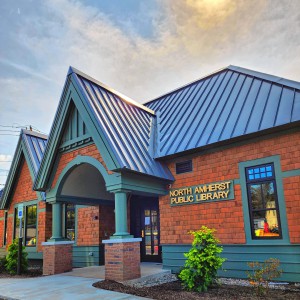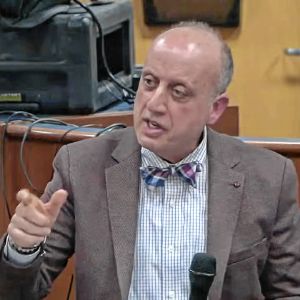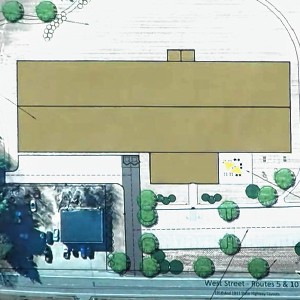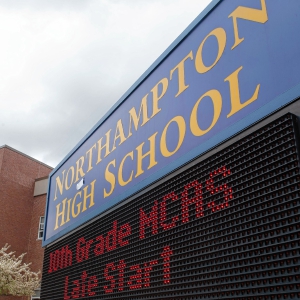Denise Lello and Adele Franks: A needed step toward all-electric future
| Published: 09-02-2023 7:01 PM |
This summer Gazette readers have been riveted by the devastation and death around the globe due to climate change — including in our own backyards.
We are fortunate to live in a region where some of our local government leaders are making strides to reduce our climate impacts. Incentives provided by the Inflation Reduction Act at the federal level, and Massachusetts programs like MassSave at the state level, also provide help for us to move quickly toward a carbon-free future.
Additionally, there are actions we can take at the local and state level to move us toward further reducing our carbon emissions. Among these are the state’s Opt-in Specialized Stretch Building Code, which will be considered for adoption by the Northampton City Council at its Sept. 7 meeting.
For those who may not be aware, the state of Massachusetts sets building code standards for all cities and towns in the state. The building codes are revised periodically to be consistent with the International Energy Conservation Code. In 2009, Massachusetts instituted a Stretch Energy code for buildings with the goal of more energy-efficient and cost-effective construction. The Stretch Code has been widely adopted by cities and towns across Massachusetts, and is required by all municipalities participating in the Green Communities program (more than 80% of all municipalities in Massachusetts, including Northampton). All Green Communities have already adopted the newly updated Stretch Code that went into effect on July 1.
The Climate Act of 2021 required that the Department of Energy Resources create new building energy codes “consistent with Massachusetts greenhouse gas limits and sub-limits set every five years from 2025-2050.” Both the new Stretch Code and the Opt-in Specialized Stretch Code were finalized in December 2022.
The Opt-in Specialized Stretch Code requires a formal vote by city council or town meeting. Eighteen communities representing over 18% of the state’s population have already adopted the code, including large cities such as Boston, Cambridge, Somerville, Newton, etc. Northampton is among the second wave of many towns and cities that will consider adopting the Opt-in Specialized Stretch Code this fall.
The Opt-in Specialized Stretch Energy Code builds on the efficiency and clean energy improvements in the updated Stretch Energy Code and requires new construction that’s all-electric or ready for an all-electric future, which is consistent with our state-mandated net-zero goals through deep energy efficiency, reduced heating loads, consumer protection, and efficient electrification.
Article continues after...
Yesterday's Most Read Articles
 ‘Home away from home’: North Amherst Library officially dedicated, as anonymous donor of $1.7M revealed
‘Home away from home’: North Amherst Library officially dedicated, as anonymous donor of $1.7M revealed
 ‘We can just be who we are’: Thousands show support for LGBTQ community at Hampshire Pride
‘We can just be who we are’: Thousands show support for LGBTQ community at Hampshire Pride
 South Hadley man killed in I-91 crash
South Hadley man killed in I-91 crash
 Retired superintendent to lead Hampshire Regional Schools on interim basis while search for permanent boss continues
Retired superintendent to lead Hampshire Regional Schools on interim basis while search for permanent boss continues
 A Waterfront revival: Two years after buying closed tavern, Holyoke couple set to open new event venue
A Waterfront revival: Two years after buying closed tavern, Holyoke couple set to open new event venue
 Proposed Hatfield pickleball/tennis building raising eyebrows
Proposed Hatfield pickleball/tennis building raising eyebrows
There are actually very few changes from the Stretch Code, which Northampton has automatically adopted, in the Opt-in Specialized Stretch Code. The changes focus on consumer protection and energy efficiency, which save consumers money and unnecessary work to achieve energy savings at a future date. The changes can be outlined as follows:
1. No additional requirements for additions, alterations, or renovations.
2. No additional requirements for all-electric new construction (except large multifamily buildings, see point 4).
3. Any new residential construction with fossil fuel combustion systems (except large multifamily buildings, see point 4) will need to: a) Provide consumer protection by pre-wiring for electrification (wiring is easy and low cost at time of construction, while being expensive and time-consuming later); b) Install a minimum amount of solar (with some exceptions for shading) to help offset onsite fossil fuel combustion emissions (and also reduce electricity bills); c) Homes over 4,000 square feet that are not all-electric must be “net-zero” — or in other words must install enough solar or other renewables to offset all of the home’s energy use.
4. Any new multifamily housing construction of more than 12,000 square feet will need to meet high energy efficiency “passive house” standards.
The new Opt-in Specialized Stretch Code will help us accomplish several things: make progress toward our 2050 net zero climate goals; realize a future with healthier and more energy-efficient buildings; and avoid burdening ourselves with buildings that will need expensive retrofits later.
New construction represents a small portion of our current emissions, but we must start now to reduce residential and commercial building sector emissions. Existing buildings will be difficult and expensive to retrofit since they were not built with energy efficiency in mind.
The adoption of the Specialized Stretch Code is a win-win for our community. It adds only a few changes to the already adopted Stretch Code. It is being rapidly adopted by communities large and small throughout the state. We urge you to support this important building code upgrade and to encourage your City Councilor to vote for adoption.
We welcome your questions.
Denise Lello lives in Northampton and is a member of Mothers Out Front. Adele Franks lives in Florence and is a board member of Local Energy Advocates.

 Guest column: Serving educational needs shouldn’t be ‘aspirational’
Guest column: Serving educational needs shouldn’t be ‘aspirational’ My Turn: Gaza and lies
My Turn: Gaza and lies Guest columnist Mariel E. Addis: Pride and prejudice
Guest columnist Mariel E. Addis: Pride and prejudice Guest columnist Gene Stamell: We know what we know
Guest columnist Gene Stamell: We know what we know
